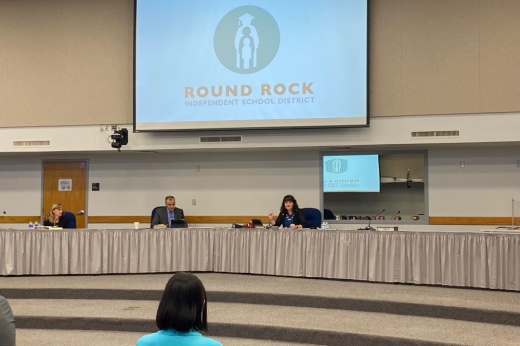Round Rock officials approved a $518 million operating budget that features increased pay for some staff and a higher estimate for recapture payments due to the state of Texas than previous years.
The proposed budget was passed June 16 in a 4-0 vote, absent Place 1 Trustee Jun Xiao, Place 2 Trustee Mary Bone and Place 7 Trustee Danielle Weston.
Xiao was not in attendance, as his resignation was accepted by the board earlier in the week. Bone and Weston departed the meeting early, requiring Place 5 Trustee Amy Weir to attend the meeting in person to maintain a four-person quorum, despite having symptomatic COVID-19. Weir's attendance was in compliance with district policy based on the start date of her symptoms, according to board President Amber Feller.
For fiscal year 2022-23, the $518 million budget approved by the board is based on the presumption of a management and operations tax rate of $0.8546 that will fund district operations. There are two presumed tax rates for debt service, or the I&S rate, that the board could choose from, according to district documents. These are $0.225 and $0.2139. The board did not vote on a tax rate that night, but it will later in the budget cycle once the maximum compression rate is set by the state, according to RRISD Chief Financial Officer Dennis Covington.
Covington said his department combed over each line item to determine where allocated funds were not actually being spent, in order to tighten up the budget. According to the district, this measure reduced its proposed budget by about $4.8 million.
In early May, the board approved an amendment to the 2022-23 compensation plan giving up to 5% pay increases for district teachers and librarians and up to a 4% increase for administrative and operational support roles. Instructional support, technology, instructional and business exempt, and district police will also receive up to a 3% general pay increase for the coming school year.
District documents also show the budget accounts for $72.5 million in recapture payments, which have increased with a rise in property values. These documents state the district is predicting a 13% increase in local property values, based on data from the Williamson Central Appraisal District. Any excess local revenue derived from property taxes, as determined by a formula created by the state, is required to be paid back to the state and reallocated to other districts with less property value. This means that although property values are increasing, the district is not able to retain a majority of additional revenue.
While the budget itself is balanced, the district has decided to absorb increased health care costs without passing them on to employees, creating a $3 million deficit.





